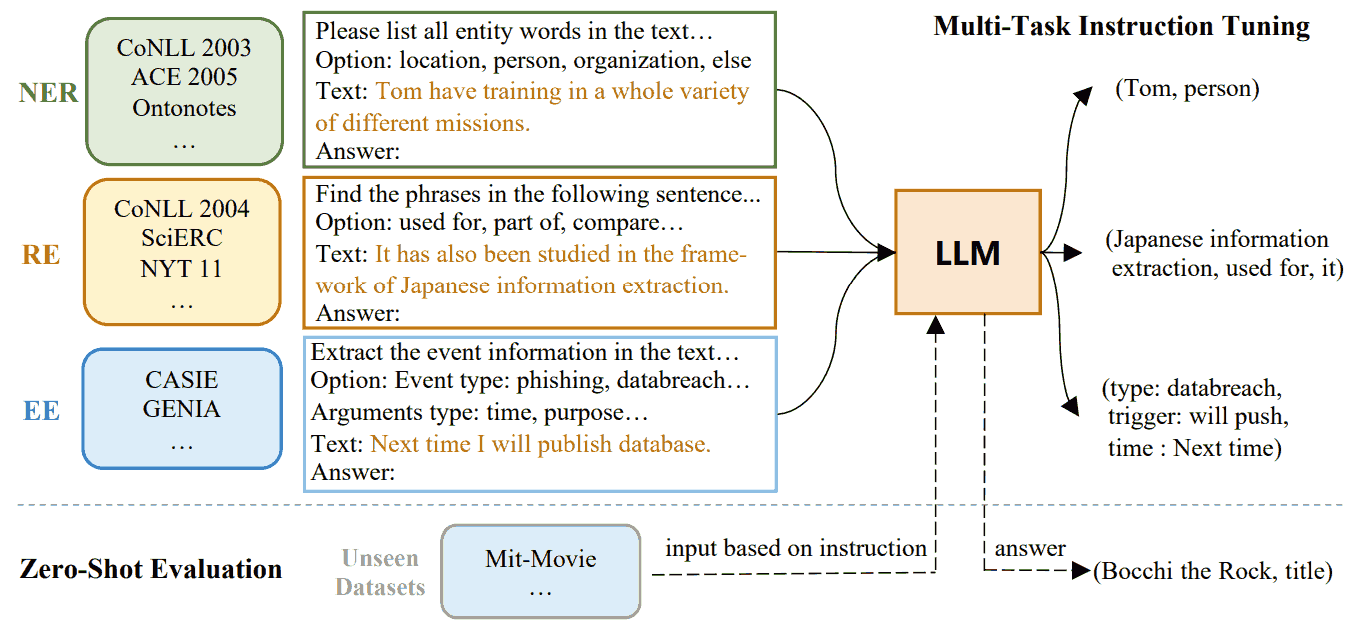
随便记两篇文章.
Wang, X., Zhou, W., Zu, C., Xia, H., Chen, T., Zhang, Y., ... & Du, C. (2023). InstructUIE: Multi-task Instruction Tuning for Unified Information Extraction. arXiv preprint arXiv:2304.08085.
和之前生成式 UIE 方法差不多, 把不同抽取任务写成比较统一的格式, 再 seq2seq. 现在生成模型换成了更大的 LLM, 所以低资源下更好; 输入输出格式也换了. 宣称的结果是和有监督的 BERT 相仿, zero-shot 上显著超越 GPT-3.5.
<!-- more -->
以上图 NER 为例, prompt 中的 option 限定了实体类别.
除了几大主要任务, 每类信息抽取任务增加了一些子任务辅助训练. 以 NER 为例
ES: Please list all entity words in the text that fit the category. Output format is "type1: word1; type2: word2".
ET: Please find all the entity words associated with the category in the given text. Output format is "type1: word1; type2: word2".
NER: Please tell me all the entity words in the text that belong to a given category. Output format is "type1: word1; type2: word2".
Longpre, S., Hou, L., Vu, T., Webson, A., Chung, H. W., Tay, Y., ... & Roberts, A. (2023). The flan collection: Designing data and methods for effective instruction tuning. arXiv preprint arXiv:2301.13688.
更大更多样的数据
We find task balancing and enrichment techniques are overlooked but critical to effective instruction tuning, and in particular, training with mixed prompt settings (zero-shot, few-shot, and chain-of-thought) actually yields stronger (2%+) performance in all settings.
Additionally, enriching task diversity by inverting input-output pairs, along with balancing task sources, are both shown to be critical to performance. For example, a dataset may be originally designed for, given a question x, evaluate if a model can answer y. Input inversion instead gives a model the answer y and trains it to generate the question x. This is an easy method to enrich the task variety given a limited set of data sources. However, it isn’t clear that this method remains helpful when 100s of unique data sources and 1000s of tasks are already available.
Flan-T5 requires less finetuning to converge higher and faster than T5 on single downstream tasks—motivating instruction-tuned models as more computationally efficient starting checkpoints for new tasks.